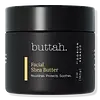What's inside
What's inside
 Key Ingredients
Key Ingredients

No key ingredients
 Benefits
Benefits

 Concerns
Concerns

 Ingredients Side-by-side
Ingredients Side-by-side

Water
Skin ConditioningEthylhexyl Isononanoate
EmollientNiacinamide
SmoothingGlycereth-26
HumectantHydroxyethyl Acrylate/Sodium Acryloyldimethyl Taurate Copolymer
Emulsion StabilisingButylene Glycol
HumectantPhenoxyethanol
PreservativeCarbomer
Emulsion StabilisingPolyisobutene
Caprylyl Glycol
EmollientBisabolol
MaskingPEG-7 Trimethylolpropane Coconut Ether
EmulsifyingSodium Hydroxide
BufferingEthylhexylglycerin
Skin ConditioningHexylene Glycol
EmulsifyingBorago Officinalis Seed Oil
EmollientAloe Barbadensis Leaf Juice
Skin ConditioningSodium Hyaluronate
HumectantRetinyl Palmitate
Skin ConditioningGlycerin
HumectantCalendula Officinalis Flower Extract
MaskingCucumis Sativus Fruit Extract
EmollientWater, Ethylhexyl Isononanoate, Niacinamide, Glycereth-26, Hydroxyethyl Acrylate/Sodium Acryloyldimethyl Taurate Copolymer, Butylene Glycol, Phenoxyethanol, Carbomer, Polyisobutene, Caprylyl Glycol, Bisabolol, PEG-7 Trimethylolpropane Coconut Ether, Sodium Hydroxide, Ethylhexylglycerin, Hexylene Glycol, Borago Officinalis Seed Oil, Aloe Barbadensis Leaf Juice, Sodium Hyaluronate, Retinyl Palmitate, Glycerin, Calendula Officinalis Flower Extract, Cucumis Sativus Fruit Extract